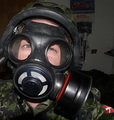This will keep the academics arguing for years.
LOL! It has... and will... and you better not be calling me an academic- them's fightin' words, mister.

You Colonials usually go the opposite way (I suspect just for the sake of being different) but I don't think so in this case. I see angle of incidence being the angle the wing is fitted to the aircraft. This is usually fixed. Angle of attack can be changed in flight with the elevators.
Whew, that's a relief... I heard somewhere that you Brits have it all backwards...
 . I actually own a copy of the very dry but fascinating An Introduction to aeronautical Engineering, Vol.1 : the Mechanics of Flight by A.C Kermode, B.A., Fellow of the Royal Aeronautical Society (printed 1941), I was thinking I got that impression there... let's see... flip, flip... but no, he's got it right, too.
. I actually own a copy of the very dry but fascinating An Introduction to aeronautical Engineering, Vol.1 : the Mechanics of Flight by A.C Kermode, B.A., Fellow of the Royal Aeronautical Society (printed 1941), I was thinking I got that impression there... let's see... flip, flip... but no, he's got it right, too.  Probably just one of those pernicious myths you hear hanging around airport bums.
Probably just one of those pernicious myths you hear hanging around airport bums. 
And for what it's worth, here's an excerpt that shows an even more interesting view of how a wing produces lift, which integrates the pressure and downwash theories:
Another way of looking at it is to consider the curvature of the streamlines. In order that any particular particle of air may be deflected on this curved path, a force must act upon it towards the centre of the curve, so that it follows that the pressure on the outside of the particle must be greater than that on the inside; in other words, the pressure decreases as we approach the inner streamlines, i.e. the ones near the top of the aerofoil. This point of view is interesting because it emphasizes the importance of curving the streamlines downwards, which is the essence of the whole matter.
Hmm. I have only skimmed this little book, mostly to admire the nice photos of vintage airplanes, but I should really hunker down and read it thoroughly some time. ..
PS. Surely this is the whole crux of the argument. The wing is moving through the air, not the other way round.
You're absolutely right, but the "down and back" I keep referring to describes only the air's movement relative to the path of the airplane... although when you consider how the air following the curve of the airfoil (and the zone of higher pressure ahead of its leading edge produced by it as it moves throught the air) apparently accelerates, there's a little more to it... it all looks so simple, but man, is it complicated!!

Whatever- all I can say at this point is that if I start thinking about fluid dynamics on the molecular level while flying, I'm going to end up in a tree somewhere, but if I remember that the wing must keep that downwash going, I'll be OK.
If I ever want to design an airplane, though... ;)










 Despite the attitude the aircraft was moving horizontally under full control.
Despite the attitude the aircraft was moving horizontally under full control.

 Bar by Mees
Bar by Mees





